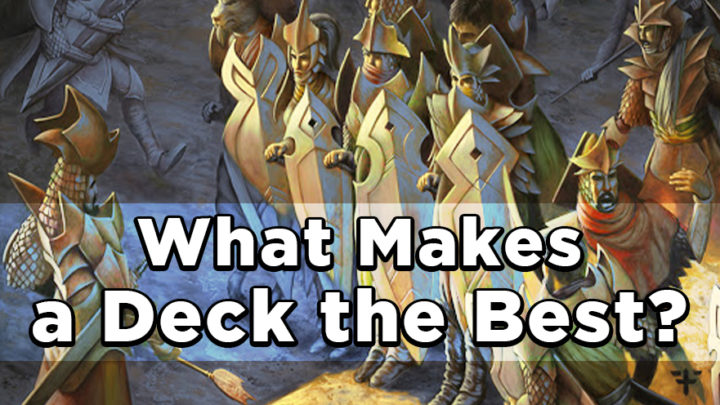Magic’s competitive formats are all in a good place right now. There are a variety of powerful decks to choose from in Standard, Pioneer, and Modern, with a ton of interesting decisions in each game. Sometimes, though, deck selection is a non-factor; a single deck is so good that it gives you the best chance to win a tournament regardless of what everyone else brings to the table.
Recognizing whether a “best deck” exists can provide a huge leg up. One of the strongest decks I’ve ever played in a tournament was Bant Golos at SCG Philadelphia last year; I played nineteen matches, and only five of them were mirrors. That means that fourteen of my nineteen opponents chose not to play it!
It’s also valuable to evaluate how far ahead of the rest of the field that deck is and how much it’s correct to hedge for the mirror. Food decks in recent Standard illustrate how this can play out.
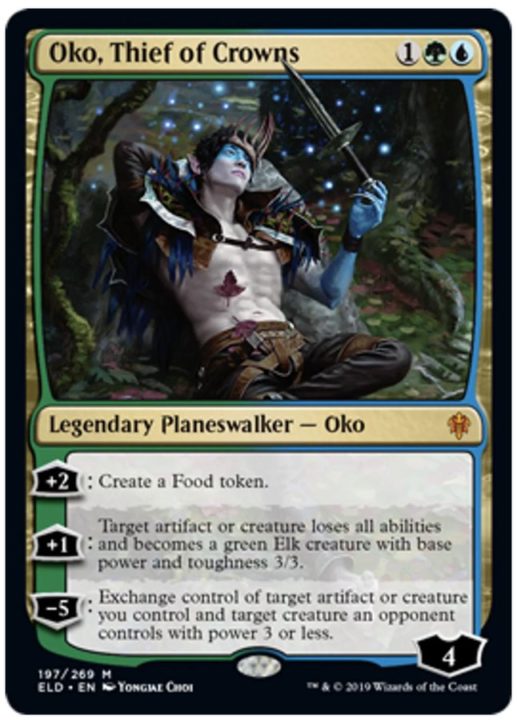
As it became clear that Simic Food was the best deck after the Golos ban, players started adding black cards to the deck and moving Noxious Grasp and Aether Gust to the main deck to gain an advantage in the mirror. But in Mythic Championship VI, three players made Top 8 with Simic Food decks! While Sultai remained a good choice, these players gave up access to powerful black cards in favor of clean mana and access to Mass Manipulation and Brazen Borrower.
To better understand what makes a deck the “best deck,” I took a closer look at a few decks from Magic’s recent history. Each of these decks was consistently the best choice in a given format, and no amount of metagaming or sideboard hate could bring them down.
JUND
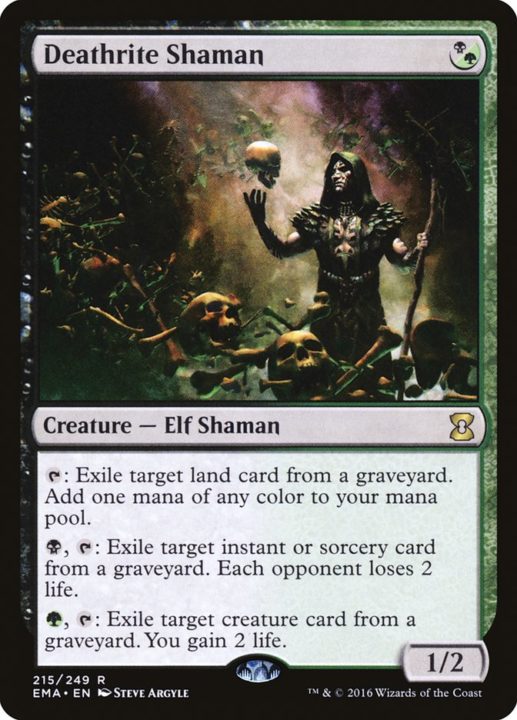
Magic players often contend that Deathrite Shaman was at fault for Bloodbraid Elf’s five-year ban from Modern. But what if I told you that at Pro Tour Return to Ravnica, legendary Jund player Willy Edel didn’t play a single copy of Deathrite Shaman in his Top 8 decklist?
Jund was a strong deck for its time, even disregarding the most broken one-mana creature ever printed. In a Modern format where the card pool was as big as Pioneer’s, Jund had access to Thoughtseize, Inquisition of Kozilek, Tarmogoyf, Liliana of the Veil, Lightning Bolt, and Bloodbraid Elf. These cards still comprise the core of Jund today, and while the deck has received a few upgrades over the years, it surrounds that core with versatile removal spells and powerful threats that can generate an advantage on their own, just like it did eight years ago.
In any format with fetchlands, Deathrite Shaman is effectively a mana dork. Noble Hierarch’s success shows that even a small amount of relevance outside of producing mana can make a mana dork extremely powerful. But Deathrite Shaman’s other two abilities have a huge impact in a wide variety of situations, putting it in a league of its own. If someone is trying to take Griselbrand out of their graveyard, flashback a spell with Snapcaster Mage, cast a game-winning Lava Spike, or stabilize their life total with blockers, Deathrite Shaman stands in the way.
Jund continued to make adjustments as the metagame shifted, and Deathrite Shaman’s power made up for the individual weaknesses of whatever card it was playing to fight that week’s metagame. Geralf’s Messenger, Kitchen Finks, Olivia Voldaren, Lingering Souls, and Ajani Vengeant all showed up at some point.
Bloodbraid Elf was eventually banned, weakening Jund, but not by much. Then, finally, Deathrite Shaman got the axe. Jund’s power level dipped too low to fight metagame shifts, and the deck was mostly relegated to obscurity until the unbanning of Bloodbraid Elf and the printing of Wrenn and Six.
BANT COMPANY
The top-finishing decks from PT Shadows over Innistrad showed a healthy format. Eight different decks advanced to the Top 8: two different Esper Control decks, two different Pyromancer’s Goggles decks, a Seasons Past deck, Green-White Tokens with eight powerful Planeswalkers. Finally, there were two Collected Company decks: Bant Company and Black-Green Aristocrats.
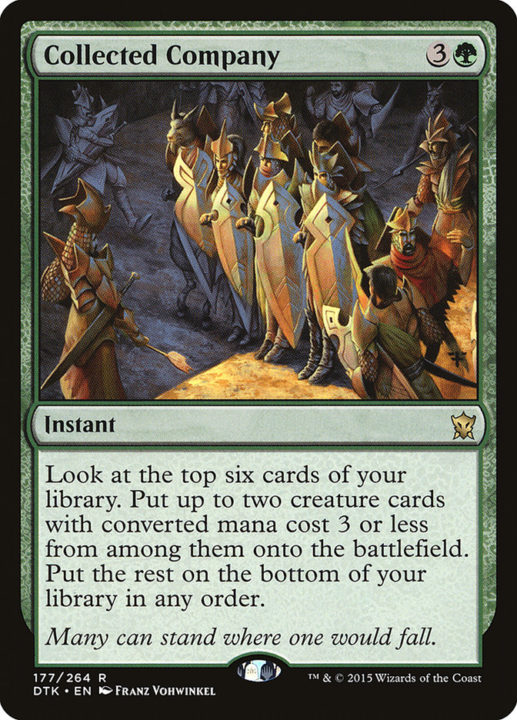
The Collected Company decks differed from the other decks with strong finishes at PT Shadows over Innistrad in one way that turned out to be important later. Many of the other top-finishing decks were full of powerful cards like Ruinous Path, Goblin Dark-Dwellers, and Dragonlord Ojutai. But Aristocrats was a pile of mediocre cards that could outvalue opponents who only focused on breaking up its synergies. Bant Company included cards like Jace, Vryn’s Prodigy, Duskwatch Recruiter, and Sylvan Advocate that didn’t look like they belonged in the same deck. If it weren’t for a strong turn-four play that could put two creatures into play when you need to pull ahead, these decks simply wouldn’t function. And if Collected Company ever had stronger options, it could overpower the other decks in the format.
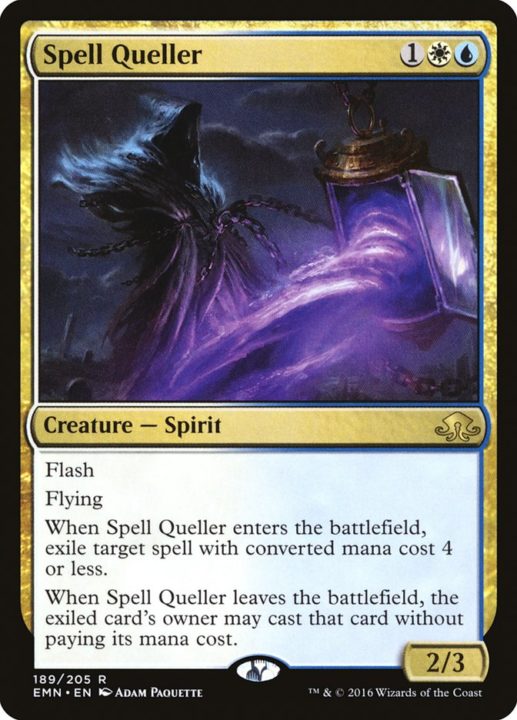
When Eldritch Moon came out, Bant Company got to cut filler like Bounding Krasis for cards it actively wanted like Selfless Spirit. This could almost have been expected, given that two- and three-mana creatures with relevant ETB effects exist in each set and there simply wasn’t a critical mass of them. But there was no guarantee that Bant Company would get a creature as powerful as Spell Queller. Suddenly, sitting across from a Bant player with four open mana meant you couldn’t expect your combat math to work out or your spells to resolve.
Another popular Bant Company deck emerged by the end of the format: Bant Humans, which could have been assembled almost entirely using cards that were legal at PT Shadows Over Innistrad, and might have done well there. There simply wasn’t anyone who pulled the trigger on Lambholt Pacifist and Thalia’s Lieutenant at the time.
RED-BLACK CHAINWHIRLER
The release of Dominaria in 2018 brought a new Standard menace: Red-Black Chainwhirler.
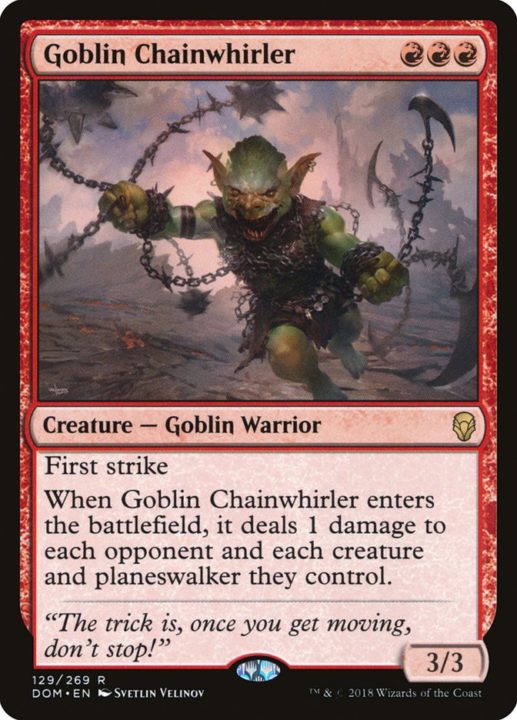
Red-Black Chainwhirler won the Standard GP in Birmingham, and six copies of the deck made Top 8 that weekend. At the next big Standard event, PT Dominaria, the metagame had a few weeks to adjust, and there weren’t six Chainwhirler decks in the Top 8. There were seven.
Every other deck was a novelty. Green cards had a particularly hard time gaining traction: without a powerful shell like the one that surrounded Goblin Chainwhirler or a card as powerful as Teferi, Hero of Dominaria, green cards were shut out of the Top 8 of numerous GPs and PTQs. A month after Dominaria, a mono-red deck with The Flame of Keld and no copies of Goblin Chainwhirler made the Top 8 of GP Copenhagen; Chainwhirler decks had become so ubiquitous that aggressive creatures with one toughness were considered unplayable.
The problem with trying to beat Chainwhirler was that it could cover virtually every angle. The primary way it did this was with effects that incidentally dealt damage to creatures: Abrade, Cut//Ribbons, Chandra, Torch of Defiance, and Glorybringer could all mow down creatures with four toughness or less. Plus, Abrade blew up God-Pharaoh’s Gift, and Glorybringer, Chandra, and Scrapheap Scrounger put pressure on control decks’ life totals.
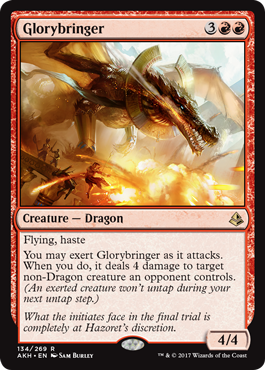
Goblin Chainwhirler took this to an extreme. It wasn’t the best card against control decks, but it was always serviceable, and it crushed aggressive decks with small creatures so hard that strategies like White Weenie became completely unplayable. Red-Black Chainwhirler wasn’t particularly good at beating decks with bigger creatures or no creatures at all, but it was still fine against those decks, and it remained extremely good at crushing smaller strategies.
Standard took months to adjust. Even with most of the format trying to beat it, Red-Black Chainwhirler reliably put multiple players in the Top 8 of major tournaments. The only other creature-based decks that could compete was BGx Constrictor, which had huge, cheap creatures that could outscale Red-Black Chainwhirler’s removal. Slower decks with cards like Teferi, Hero of Dominaria, The Scarab God, and Nexus of Fate that could ignore Chainwhirler’s incidental removal took up the other non-Chainwhirler slots at the top of big tournaments.
CONCLUSIONS
The common thread among these three decks is that they do at least one extremely powerful thing, but they’re well-rounded enough to beat anyone who only tries to target them. Putting four copies of Dispel in your sideboard wouldn’t have been good against Bant Company; if they suspected you had Dispel, they’d just play creatures on curve and strand it in your hand.
A similar dynamic applies to the pure combo decks that have been strong enough to be the “best deck” recently in spite of hate cards: Krark-Clan Ironworks and Hogaak in Modern, and Jeskai Breach in Legacy. Hogaak and Jeskai Breach both have enough fair elements to prevent hate cards from shutting them down, but if a hate card resolves before the combo deck can go under it, the combo deck can put itself in a position to remove the hate card before shifting back into full combo mode. If a player wanted to cover a combo deck’s overall plan, they would have to play more powerful hate cards than the combo deck could reasonably deal with.
If there is a “best deck” in your format(s) of choice and you’re not sure you’ll like playing it, my advice is to try it, anyway. Winning has a way of making you like things you wouldn’t otherwise; plus, it’s a good opportunity to learn a new type of strategy. If you still don’t like playing the deck after a while, think about what makes it so good and start working on decks that can exploit its weaknesses. The response to Chainwhirler was a good example of this: by August, it was still the best deck in the format, but people who wanted to play something else put up plenty of good results with other strategies. Even some of the best decks can lose sometimes — keep that in mind as you prep for your next tournament.

Felix Sloo, also known as “xfile,” is a Magic Online grinder known for his innovative deck-building. Though he tends to play popular decks like Simic Urza, Hogaak, and Sultai Food, he earned his first Grand Prix Top 8 at MagicFest Portland 2019, where he was the only player in the tournament to register Leyline Prowler.

